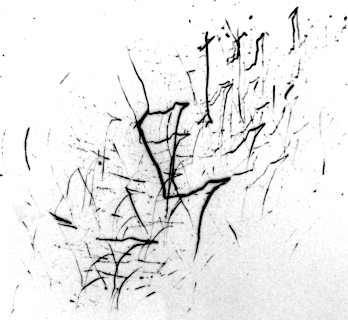elliptical tracks

I just put up my latest paper, Elliptical tracks: are these superluminal electrons? at Preprints.org.
This paper shows elliptical particle tracks in photographic emulsions that turn out to have semi-major axis sizes that are almost exactly \(137^2 n^2\) different from corresponding Bohr-Sommerfeld electron ellipse semi-major axis sizes.






